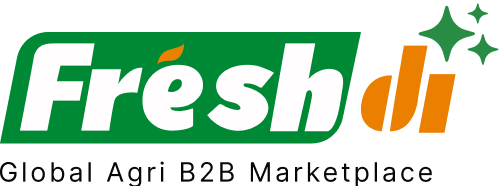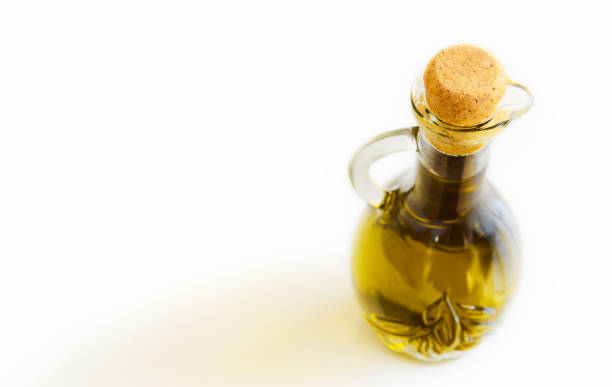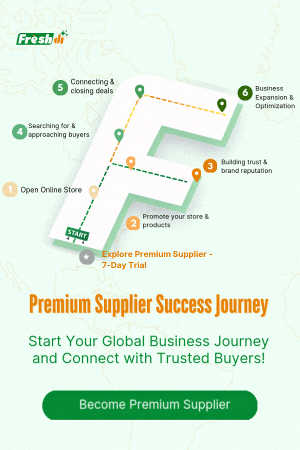Introduction – Current State of Play: The Olive Oil Sector in Italy
Italy’s olive oil industry is experiencing a whirlwind of change. From erratic weather patterns to ambitious government revitalization plans, 2025 is shaping up to be a pivotal year. The country—long revered as a global leader in premium olive oil—now finds itself confronting serious production shortfalls, volatile prices, and shifting global demand.
Recent climate events have battered olive groves, slashing yields and forcing Italy to import more than 75% of its olive oil needs. In response, the Italian government has rolled out a bold National Olive Plan and earmarked €3 billion to turn things around.
For buyers and businesses sourcing olive oil from Italy, staying agile, informed, and connected is now a must. Platforms like Freshdi are proving essential—offering real-time supplier updates, RFQ trends, and verified sourcing options in an ever-evolving market.
Deep Dive – What’s Making Headlines? Key Recent News & Impacts
Italy finds itself amid a perfect storm of production challenges, pricing spikes, and strategic realignments. Let’s break down what’s unfolding:
Production Woes and Climate Pressures
As of the 2024/25 crop year, Italy is expected to produce just 244,000 tons of olive oil—its lowest in years. This drop places it behind Spain, Greece, Tunisia, and Turkey. The key culprits? Unrelenting droughts, extreme heat, and the natural biennial production cycle of olive trees.
The southern regions—especially Puglia—have seen yields plummet by up to 80%. This has forced Italian producers to rely heavily on imports, particularly from Spain and Greece.
Price Surges and Consumption Dips
Between 2019 and 2024, Italian olive oil prices skyrocketed from €3.46 to €9.33 per kilogram. While this has boosted export revenues, it’s also led to a 13.3% decline in domestic consumption as locals turn to cheaper alternatives.
Government Investment and Modernization
To counter these challenges, Italy launched its National Olive Plan—aiming to boost production by 25% and cut costs by 20% over the next 10 years. This includes:
- Supporting local olive mills
- Reviving abandoned groves
- Establishing an interprofessional body to unify stakeholders
- Investing €3 billion from national and EU funds for infrastructure and tech advancements
Supply Chain and Trade Updates
Exporters are proactively mitigating risks, particularly around potential U.S. tariffs. Some have even opened facilities in New Jersey to streamline logistics and secure their foothold in the booming U.S. market.
Top 3 Verified Olive Oil Suppliers in Italy – Relevant in the Current Climate
Amid all the flux, knowing who to trust is crucial. We’ve selected the Top 3 Olive Oil Suppliers in Italy in Year 2025 based on verified track records, certifications, global presence, and recent buyer reviews on Freshdi. These suppliers are not just maintaining quality—they’re adapting and thriving.
1. NORCINERIA LUCANA DI DI SANTO ANTONELLO
- Specialty: Biodynamic Extra Virgin Olive Oil
- Strengths: Focuses on sustainable, organic cultivation. Ideal for eco-conscious buyers.
- Why They Stand Out: Their biodynamic farming approach is resilient to climate stress, making them a reliable supplier in unpredictable conditions.
2. JOE & CO. S.R.L.
- Specialty: Cold-Pressed Organic Extra Virgin Olive Oil
- Strengths: HO.RE.CA. focused with scalable packaging options.
- Why They Stand Out: Their cold-extraction methods preserve flavor and nutrients, meeting premium market demands in the U.S. and Japan.
3. Tesori del Matese Srl
- Specialty: Black Truffle Infused Olive Oil
- Strengths: Luxury segment targeting gourmet and specialty food markets.
- Why They Stand Out: Their artisanal offerings align with the rising global demand for niche, high-margin olive oils.
Dynamic Ranking Note: Supplier performance can shift due to market activity. Platforms like Freshdi offer “Suppliers of the Month/Quarter” badges based on real-time buyer engagement, RFQs, and fulfillment records.
Market Navigation – Strategic Responses to the Prevailing Olive Oil Landscape in Italy
Navigating Italy’s olive oil sector right now is like steering a ship through stormy seas. But with the right strategy, there’s serious opportunity to be seized.
Opportunities for Buyers
- Booming Export Markets: Italy’s olive oil exports topped €2 billion in just the first eight months of 2024—a 59% jump from 2023. The U.S., Japan, and Canada are especially strong markets.
- Premium Product Demand: Organic, DOP, and IGP-certified oils are in high demand. Italy’s 42 protected olive oil labels are leading the charge in the EU.
Challenges to Watch
- Climate Risks: Southern Italy, especially Puglia and Foggia, is facing severe yield losses. Buyers should diversify sourcing regions and verify harvest forecasts.
- Market Instability: With over 75% of olive oil now imported, domestic supply chains are under pressure. Price volatility is likely to remain high.
- Fraud Risks: Over 260,000 liters of adulterated olive oil were seized in 2023. This underscores the need for traceability and verified sourcing.
Strategic Sourcing Tactics
- Use Verified Platforms Like Freshdi: Freshdi ensures supplier legitimacy, reviews, and compliance—helping you avoid counterfeit products.
- Consider Regional Alternatives: Northern and central Italian regions may offer more stable yields compared to the drought-hit south.
- Focus on Quality Assurance: Ask for certifications, lab reports, and production transparency. This is crucial in a market where fraud is a growing issue.
- Monitor RFQs and Market Trends: Freshdi offers real-time RFQ trends so buyers can respond to market shifts as they happen.
Short-Term Outlook
Prices remain high—averaging €9.50/kg in January 2025—but so does demand. The export market is on fire, and high-end consumers are willing to pay more for quality, traceability, and sustainability.
However, supermarkets flooding the market with ultra-cheap oils have raised alarm bells. Producers fear these discounts may devalue real extra virgin oils. Businesses should be cautious of too-good-to-be-true deals.
Conclusion – Key Takeaways for Businesses in a Dynamic Market
The Italian olive oil industry is in a period of profound transformation. Climate change, fluctuating prices, and shifting consumer preferences are shaking the foundations of a heritage-rich sector.
But with disruption comes opportunity. For businesses, the key lies in:
- Partnering with verified, adaptable suppliers like NORCINERIA LUCANA, JOE & CO., and Tesori del Matese.
- Following real-time trends through platforms like Freshdi, which provide market intelligence, supplier reviews, and RFQ data.
- Prioritizing quality and traceability, especially in a market vulnerable to fraud and supply shocks.
As 2025 unfolds, staying informed and strategically agile will separate winners from losers in the olive oil trade.
Buyer’s Checklist: Sourcing Olive Oil from Italy in 2025
- ✅ Is the supplier verified on platforms like Freshdi?
- ✅ Does the product have DOP/IGP or organic certification?
- ✅ Are you sourcing from climate-resilient regions?
- ✅ Have you checked recent RFQ trends and pricing shifts?
- ✅ Is traceability and fraud prevention part of your quality control?
Future Outlook – What’s Next for Italy’s Olive Oil Sector?
The next few years will likely see:
- Tech-Powered Agriculture: More farms will adopt precision farming, drones, and AI to improve yields.
- Sustainability Focus: Carbon-neutral production and regenerative farming will become major differentiators.
- Global Market Expansion: Italy will double down on exports, especially in Asia and North America.
- Data-Driven Sourcing: Buyers will increasingly rely on platforms like Freshdi for real-time analytics and smarter procurement.
How Freshdi Empowers Olive Oil Buyers
- 🚀 Verified Supplier Network: No more guessing—know who you’re dealing with.
- 📊 Live Market Insights: Stay ahead of pricing, demand, and supply shifts.
- 📦 RFQ Analytics: Identify what’s trending before your competitors do.
- 🔍 Supplier Performance Reviews: Make data-backed sourcing decisions.
- 🤝 Direct Communication: Message suppliers directly for quotes, samples, and deals.
FAQs
1. Why is Italian olive oil so expensive in 2025?
Because of climate challenges and reduced production, supply is low while demand remains high—especially from export markets like the U.S.
2. Is it safe to import olive oil from Italy with concerns about fraud?
Yes, if you use verified platforms like Freshdi which ensure quality checks, supplier verification, and traceability.
3. What types of olive oil are in demand right now?
Premium, organic, and region-specific olive oils—especially those with DOP/IGP certification—are highly sought after.
4. Which regions in Italy are best for olive oil in 2025?
Northern and central regions are more stable due to less climate impact. Southern regions like Puglia are dealing with severe droughts.
5. How can I get real-time updates on olive oil suppliers in Italy?
Join Freshdi to get real-time RFQ alerts, supplier performance data, and market trend insights.
References
- Olive Oil Times – Market Instability
- Italian Food News – Market Leadership
- Olive Oil Times – Revitalization Plan
- Olive Oil Times – €3 Billion Investment
- 9Colonne – Export Growth
- Italian Feelings – Premium Product Demand
- Euronews – Climate Impact
- Tridge – Import Plans
- Olive Oil Times – Fraud Concerns
- FT – Industry Future


